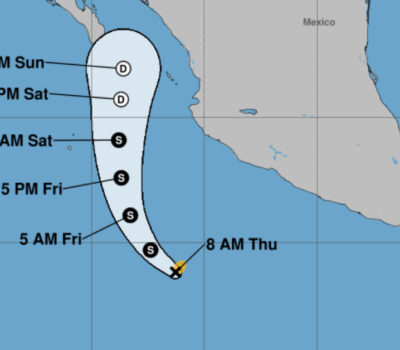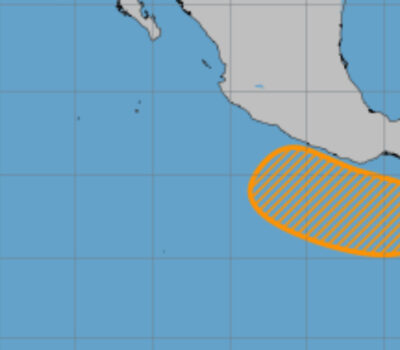Ramiro Flores, Daniel Trujillo, David Treviño and Hugo Garcia never imagined the impact they would have on the development of Mexico and Latin America.
They were near graduated from the Tecnológico de Monterrey when they had the opportunity to “experiment” with a new technology that until then had little exploration.
The young engineers formed the then computer management team of Monterrey Campus. With the support of the university, they worked hard to achieve the Internet connection for the first time in Mexico (recognized by NSFNet), between this campus and the School of Medicine of the University of Texas, in San Antonio. They did so with address 131.178.1.1 of the MicroVAX team and the name mnetv1.mty.itesm.mx. The first communication was October 12, 1988.
Everything had begun in 1986, when the Monterrey Campus subscribed to the consortium of Universities and Research Institutes Education Communication (EDUCOM). Thanks to this, they was connected to the BITNET international cooperative academic network and linked to the closest node, the one of the University of Texas, in Austin, through a private telephone line and a couple of modems, which marked the beginning of a close relationship between both institutions.
That was the first introduction of the group and the Tecnológico de Monterrey to the Internet: a network that allowed them to reach the rest of the then 26 campuses, establish contact, communication and collaboration with higher education institutions abroad. However, BITNET essentially worked to send and receive emails. it also offered other services, such as discussion lists or access to libraries.
Tec de Monterrey wanted to go further to achieve a true collaboration and academic exchange with other places of higher education and research outside the country, mainly Americans. The Tec was looking for new ways to bring the system to the forefront, “to compare us with the best universities abroad,” says Hugo García.
In 1988, just two years after the arrival of BITNET in Mexico and the Tecnológico de Monterrey, Daniel Trujillo and David Treviño participated in a technological meeting at the University of Texas, in Austin, where they heard mention, for the first time, of the network called THENET (Texas Higher Education NETwork). “They already called it the internet,” recalls Hugo García.
That network offered services beyond email, such as a remote terminal connection and file transfer. It seemed of great importance and value for the academic world, García points out, since, “for example, a group of students or researchers could have access to supercomputers only available in federal research centers in the United States, of a very high level and computing potential.”
The team began working to achieve the connection of the Monterrey Campus to this new network. But the road was not easy. THENET was regional and from the state of Texas with connectivity to the NSFNET (National Science Foundation NETwork). This, in turn, was sponsored by the United States, so they had to obtain permits “and explain again and again that there was no commercial or commercial interest to do so,” says Treviño.
At that time, telecommunications and the infrastructure in Mexico were very limited. Everything was analog and it was almost impossible to import computer material. But the Tecnológico de Monterrey understood very well from the beginning the importance of connecting to THENET and why it should invest in it. “Ramiro was fundamental,” says Daniel Trujillo, “because he had to go with the rector to explain and ask for a budget. But it gave value to the Technological, as a letter of introduction, to say ‘we have access to the internet’ “.
Thus, after months of negotiations, training, installations and other preparations, in 1988 they achieved the first connection to the Internet from Mexico. “It was a team effort; all the pieces had to come together to achieve it,” says Trujillo. This opened the doors to great opportunities in Mexico and allowed to establish very close ties, first with universities in the United States and then with others in Latin America.
With the connection to THENET, the Monterrey Campus of the Tecnológico de Monterreygained had access to more than 30,000 nodes around the world. Was there resistance to the change? David Treviño says no, because the community of this institution has always been very open to these issues. However, at the beginning, “not everyone understood what he could do with it”, but “they discovered it little by little”, says Hugo García.
Hugo also shares that there were students and teachers with a high level of curiosity who soon saw the potential in this network. Then, they began to develop their own projects based on it, mainly exchange of knowledge and collaboration with other places of higher studies and research. “It was not just about communication, it was about making use of computing resources that we did not have.”
This technology attracted national attention. Daniel Trujillo recalls that then president of Mexico, Carlos Salinas de Gortari, once visited the Monterrey Campus. In front of him, the group connected to Harvard University. “The man was surprised and was happy to see that it was possible.”
Quickly, other Tec campuses became interested in participating in THENET. The first one was the State of Mexico, then the second largest in size. Soon they had their connection to a private line.
This was possible thanks to one of the most outstanding advantages of THENET: its construction on a TCP / IP protocol (Transmission Control Protocol / Internet Protocol). What does this mean? That the network was no longer exclusively for a single type or brand of computer equipment, contrary to BITNET, which required devices such as those from IBM to which few had access.
The first connection outside the Tec occurred at the National Autonomous University of Mexico (UNAM), says Hugo García, who was responsible for making this collaboration model extend outside the system. Among the first Mexican institutions that joined were the Technological and Higher Studies Institute of the West (ITESO) and the University of Guadalajara, the University of the Americas (UDLA). Other places of study in Latin America were also added, such as the University of Chile.
Thus was born the need to have an organization that could continue growing the network in the country. In 1992 this resulted in the creation of MEXNET, an association composed of all these institutions and that was academic until it was replaced by commercial internet.
In order for people to be part of the internet, they had – and still need – a unique IP address. “When more and more requests began to be made” to the Network Information Center (NIC) of the Stanford Research Institute (SRI), the first central coordinating authority for network operation, “they told us that they could not attend all the institutions that there may be in Mexico, they needed someone to take charge,” says Hugo García.
The day they went to the SRI they did not imagine that they would be given the administration of the .mx domain, but they took the risk. “Our responsibility was to manage the IP addresses, record what was given to whom and report it,” said Hugo García. And that’s how they formed the Internet Network Information Center (InterNIC) of Mexico, in 1995.
InterNIC was the main internet agency responsible for domain names and IP addresses until this role was assumed by the Internet Corporation for Assigned Names and Numbers (ICANN). In Mexico, it was created and operated by the Monterrey Campus of the Tecnológico de Monterrey.
“MEXNET and InterNIC Mexico were the cornerstones with which they began to build the network in the country,” says Hugo García, who says that both had an important role. “We were very lucky to be part of that, of everything.”
David Treviño says he is surprised about the impact that the internet finally had and feels great satisfaction to participate in the introduction of these technologies. For supporting the development of a whole culture of collaboration and also for collaborating in what they considered the development of the country.
“We never imagined that the Internet was going to have the impact it has today, everything was born as an educational effort”, explains Daniel Trujillo, with emotion. And he concludes: “Yes we thought that it was going to have some kind of explosion, but it was not going to completely change the way we do business, for example. We were lucky to be the pioneers, to handle something that at that time was unattainable for many. “
Ramiro Flores, Daniel Trujillo, David Treviño and Hugo Garcia never imagined the impact they would have on the development of Mexico and Latin America . . .












